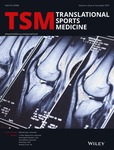Injury reporting via SMS text messaging and online survey in community sport: A feasibility study
Funding information
This project was funded by a Collaborative Research Network and Australian Catholic University Research Fund grant (No. 2013000523). Laura Schwab is the recipient of a Griffith University Postgraduate Research Scholarship. Melinda Smith is supported by a University of Queensland Postdoctoral Research Fellowship (UQFEL1832429).
Abstract
The burden of injuries sustained in community Australian football is largely unknown due to the lack of viable injury surveillance methods. The use of novel methods such as automated text messaging (SMS) combined with online surveys for new injury registrations has not been evaluated in community sport. The aim of this study was to investigate the feasibility of an automated method for injury surveillance. A total of 207 players, from 10 community clubs, consented to receiving post-game text messages regarding training exposure and injuries during the preceding week, for 20 weeks. In addition to responding via SMS messaging, players completed hyperlinked online surveys to enter new injury details. Outcome variables included the injury incidence rates, players’ responses rates, response times, the number of complete injury records, and time burden for the participants and researchers. The incidence rate was 11.6 injuries per 1000 player hours (95% CI: 10.0-13.5). The feasibility measures established (a) average weekly response rates of 74.1% (range 61.7%-91.5%); (b) fast response times to SMS messages (62% within an hour); (c) moderate to high completeness of injury records (85.2%); (d) short time requirements to complete the online survey (2 minutes); and (e) researcher time saved by automation (28.8 hours less time to collect injury data). The automated method was found to be a feasible method of injury surveillance in community sport. While the completeness of injury records could be improved, the method has the potential to allow for wide-scale injury surveillance within community Australian football.
CONFLICT OF INTEREST
None declared.




